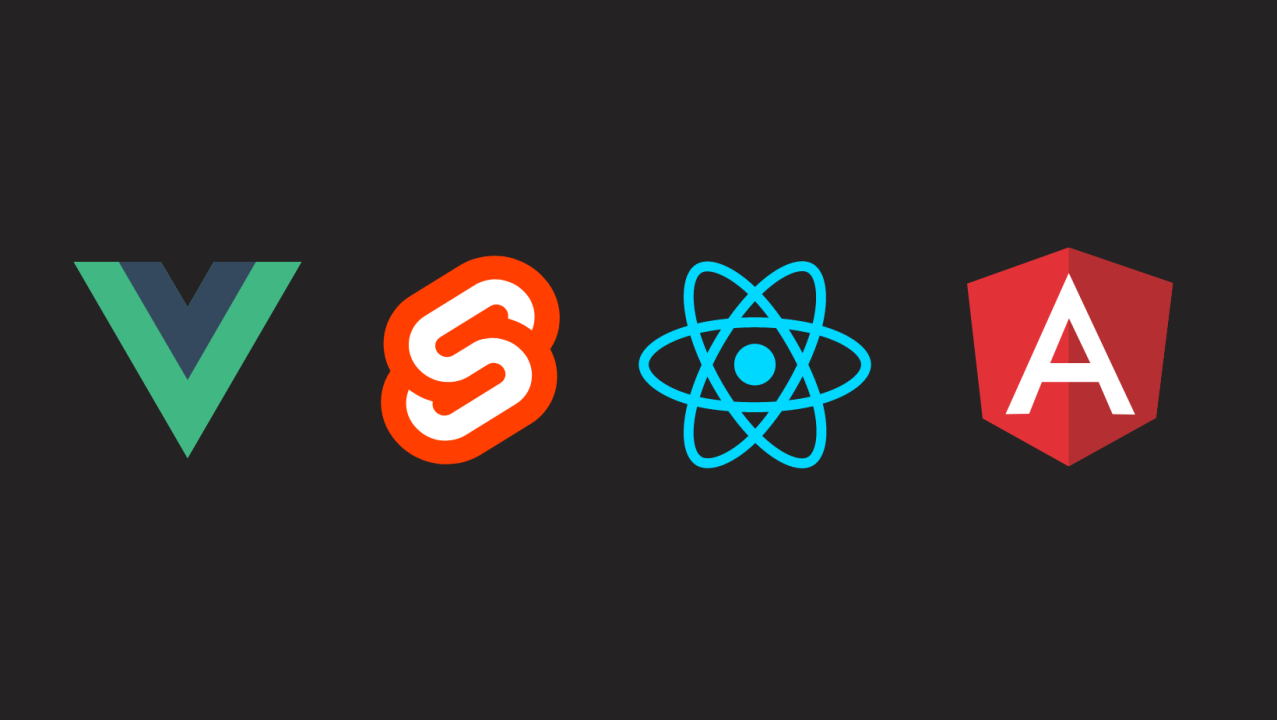Framework Comparison: React vs. Vue vs. Angular vs. Svelte
AK
react vue angular svelte javascript frontend frameworks
Framework Comparison: React vs. Vue vs. Angular vs. Svelte
1. DOM Usage
React
- Virtual DOM: Uses a virtual DOM to optimize updates and minimize direct manipulation of the actual DOM
- DOM Manipulation: React abstracts direct DOM manipulation through the virtual DOM diffing process
Vue
- Virtual DOM: Like React, Vue utilizes a virtual DOM to efficiently update the actual DOM
- DOM Manipulation: Vue’s reactivity system helps abstract direct DOM manipulation
Angular
- Real DOM: Angular primarily uses the real DOM for updates
- Change Detection: Angular’s change detection mechanism can be more resource-intensive than virtual DOM approaches
Svelte
- No Virtual DOM: Svelte operates without a virtual DOM, directly compiling components to highly optimized JavaScript
- DOM Manipulation: Svelte compiles components at build time, resulting in optimized and minimal runtime DOM updates
Which is Faster?
- React and Vue (with virtual DOM) generally offer faster updates compared to Angular (real DOM)
- Svelte, due to its compile-time approach, can provide even faster performance in terms of DOM updates
2. Rendering
React
- Rendering: React uses a component-based architecture for rendering
- JSX: React uses JSX (JavaScript XML) for defining components in a syntax that looks similar to XML/HTML
Vue
- Rendering: Vue also employs a component-based architecture
- Template Syntax: Vue uses template syntax, allowing developers to write HTML-like code directly in the markup
Angular
- Rendering: Angular is based on a component-based architecture similar to React and Vue
- Templates: Angular uses templates written in HTML with additional Angular-specific syntax
Svelte
- Rendering: Svelte introduces a unique approach where components are compiled during build time, resulting in highly optimized JavaScript
- No Framework Runtime: Unlike the other frameworks, Svelte components don’t carry a runtime library
Which is Faster?
- React, Vue, and Angular can have comparable rendering performance depending on the specific use case
- Svelte’s compile-time approach often results in faster runtime performance
3. Performance
React
- Performance: React is known for its efficient updates, making it suitable for large-scale applications
- Ecosystem: React has a vast ecosystem and community support
Vue
- Performance: Vue’s reactivity system and virtual DOM contribute to good performance
- Ease of Learning: Vue is often praised for its simplicity and ease of integration
Angular
- Performance: Angular’s performance can be impacted by its real DOM updates and more extensive framework size
- Full-Fledged Framework: Angular is a comprehensive framework with features suitable for complex applications
Svelte
- Performance: Svelte is designed for optimal performance with its compile-time approach and absence of a runtime library
- Bundle Size: Svelte often results in smaller bundle sizes compared to the other frameworks
Which is Good?
- React: Excellent for large applications and has a robust ecosystem
- Vue: Offers a balance of performance and simplicity, making it suitable for various projects
- Angular: Best suited for large enterprise applications with its comprehensive feature set
- Svelte: Excels in performance and simplicity, especially for smaller to medium-sized projects
